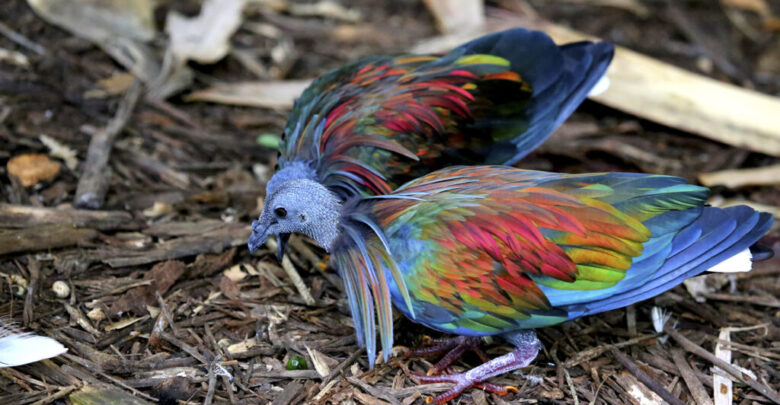

KOLKATA, India — The Andaman and Nicobar Islands — a tropical, picturesque island in the Bay of Bengal and one of India’s eight Union Territories — might soon be stripped as the Indian government eyes tourism projects, shipping industries, and big business.
The ecologically and ethnically significant Indian archipelago is staring at “mega” projects proposed to bring growth and employment.
In 2017, the proposed plan included rail construction, a port, a petrochemical complex, special economic zones, and tourism projects. An “integrated tourism complex” — an international airport and a new harbor at Dugong Creek — was also proposed.
By 2018, the government think-tank NITI Aayog (National Institution For Transforming India) prepared a report named ‘holistic development’ for potential investors focusing on the development of tourism in other islands, and four of the projects were already being considered by the expert panels from the center for clearance under the Island Coastal Regulation Zone Notification.

The document revealed by NITI Aayog in 2019 talked about its size and “strategic location” for further “sustainable development”.
“The islands in India have huge potential for tourism development, export of seafood and coconut products, organic farming of high-value crops, deep-sea mining, and other important economic sectors,” Amitabh Kant, chief executive officer, NITI Aayog, said in a statement.
The most recent was Andaman and Nicobar Islands Integrated Development Corp. Ltd., a government undertaking inviting developers for four ecotourism projects.
However, some wildlife and environmental experts claim the combined projects will wipe out the ancient tribal groups and few species endemic to the island.
“It is a shocking move by the Indian government,” Sophie Grig, senior research and advocacy officer at Survival International, a London-based indigenous rights group, told Zenger News.
“We contacted the Indian government and requested them to stop this mega project, which will affect the region’s tribal lives and ecosystem. But there was no reply from them. They ignored us.”
Initially, the government identified five islands in Andaman and Nicobar and another five in Lakshadweep — India’s smallest Union Territory — for high-quality, sustainable development.
“We identified development issues, and to address them, formulated appropriate strategies through constructive debates with reputed experts over creative ideas,” Kant said.
He said the development model could be replicated in other islands of the country.

Citizens of Lakshadweep are already up in arms after a new administrator, Praful Khoda Patel, a leader from the country’s ruling Bharatiya Janata Party and a former Home Minister of the western state Gujarat, took over and proposed several draft regulations.
While the administration wants to develop the islands into a Maldives-type tourist destination, locals say new measures were announced without discussions with the populace or any dialogue with the elected leaders.
Forty percent of birds and 60 percent of mammals are endemic to the Andaman and Nicobar region, home to particularly vulnerable tribal groups such as Jarawas, Onges, Great Andamanese, Shopmen, and Sentinelese run their livelihood through forest resources.
Unfortunately, these communities continue to struggle as their population is either static or declining.
As per international law and the Indian constitution, Grig said it is illegal to intervene in their lives and snatch their home — the forest — without consent.
“It is their home, their motherland,” Grig told Zenger News.
“If the project moves forward, it will be an intervention in their right to live, their right to livelihood. They are familiar with their land, and relocating them to new biodiversity will have consequences. They might not adapt to the new settings.”
According to India’s last census, 120 Onges, 514 Jarawas, and 50 Sentinelese live on the island.
In the late 1990s, the Jarawa tribe suffered two deadly outbreaks of measles. During the same period, the sexually transmitted disease syphilis spread through the largest tribal group, the Great Andamanese, bringing them to the brink of extinction.

“Over the past few decades, the numbers of tribal people in the Andaman and Nicobar Islands drastically dropped, and the reason was mainly due to up-gradation and people intervening in their land,” she said.
“There are only a very few left now, and they should be conserved.”
Most of the tribes on the islands are aware of the lifestyle of mainland India but choose to live and stay their way. So, they moved away from any civilization when people contacted them.
“They [the tribals] avoided the up-gradation and wanted to live in forests like their ancestors, and we should respect this,” Grig said.
The Indian archipelago is part of two global biodiversity hotspots because of the high number of endemic species — both plants and animals — found in this region.
“If you see the total biodiversity in India, these two island groups contribute largely to it,” Harikrishnan Surendran, former research fellow, Wildlife Institute of India, told Zenger News.
“We still discover new species in this region, and there will be many more in the future. Moreover, the region has the highest number of protected areas. Therefore, it will be a big loss for India to lose this region to development.”
He believes India might lose out on natural phenomena, and many species might not be seen again if the mega projects move forward.
According to NITI Aayog, islanders in both Andaman and Nicobar and Lakshadweep expect satisfactory jobs, opportunities for self-employment, sufficient income; affordable state-of-the-art facilities for healthcare; access to high-quality education; and adequate air, sea, and web connectivity.
But experts think otherwise.

“The islanders will not benefit from this move,” Manish Chandi, a former senior fellow with the Andaman Nicobar Environment Team, a research body focused on the conservation of the islands’ socio-ecological systems, told Zenger News.
“Most of them do not have the adequate skills to work there. So, people working in these tourism and shipping industries will come from mainland India.”
He believes the tribal groups will benefit the least from this move and might lose out on the resources they gather from the forests.
“There is ample land that is vacant, and the Indian government wants to set up a palm oil factory there,” Chandi said.
“If at all the government is so willing to bring tourism and shipping industries in such places, they should use the land instead of cutting down trees and destroying the ecology of the region.”
(Edited by Amrita Das and Anindita Ghosh. Map by Urvashi Makwana)
The post India’s Plans Of Mega Projects In Andaman Islands Spark Concerns appeared first on Zenger News.





